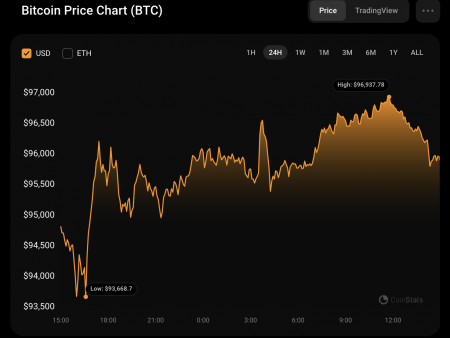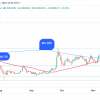
Coinbase Earned:
A $1 Million Profit from the $73 Million Curve Exploit.
Coinbase, the largest U.S. exchange, has unwittingly found itself at the center of a controversial situation stemming from the Curve exploit that rocked the decentralized finance (DeFi) market. In this unique saga, we delve into how Coinbase received a substantial windfall and the ongoing debate surrounding whether it should reimburse the victims.
Table of Contents
The Curve Exploit
In July, a bug in the code for certain liquidity pools led to the infamous $73 million Curve exploit. This event briefly disrupted the DeFi market as it exploited the imbalanced ETH and alETH tokens in the ETH/alETH pool. Savvy traders noticed a once-in-a-lifetime arbitrage opportunity and seized it.
Coinbase’s Inadvertent Beneficiary Role
The twist in this tale lies in the fact that Coinbase, unbeknownst to them, played a pivotal role. A trading bot paid 570 ETH (worth $1.06 million at the time) to ensure that an Ethereum blockchain validator, which happened to be run by Coinbase, processed its trade with utmost speed. This payment marked the second-largest ever associated with Miner Extractable Value (MEV) practices.
The Repercussions
While the majority of the stolen assets from the Curve hack have been recovered, Alchemix, which suffered a loss of $22 million in Curve-based tokens, has sought the return of Coinbase’s earnings from the exploit. However, Coinbase has not complied, citing a lack of legal obligation.
The Coinbase-Curve Saga: A Window into Asset Recovery
This unique situation highlights the complex process of asset recovery following crypto hacks. In the convoluted world of crypto trading algorithms and spontaneous arbitrage opportunities, determining where the funds ultimately end up is challenging. The biggest beneficiaries often find themselves in that position unintentionally, earning unexpected fees for their role in maintaining blockchain infrastructure.
Maximal Extractable Value (MEV)
The controversial MEV practice involves strategically ordering blockchain transactions to profit from spur-of-the-moment trading opportunities. The alETH arbitrage fee in this case marked the second-highest MEV payout for a single transaction in Ethereum’s history.
The Ongoing Debate
Alchemix has been vocal about Coinbase’s refusal to return the funds, asserting that Coinbase knowingly benefitted from the exploit. Despite efforts to negotiate, Coinbase has stood firm, citing neutrality and decentralization as reasons for not reimbursing the victims.
Conclusion
The Coinbase-Curve saga underscores the ongoing tension between the principles of “code is law” in blockchain-based finance and the limited recourse for crypto theft victims. As debates continue, the question of whether Coinbase should reimburse Curve victims with the funds it earned from the heist remains a matter of interpretation.
A cryptocurrency exchange is an online platform where you can buy, sell, or trade cryptocurrencies like Bitcoin, Ethereum, and others.
Safety varies by exchange. Look for platforms with strong security measures, like two-factor authentication and cold storage for funds.
Consider factors like security, fees, available coins, user interface, and customer support.
Centralized exchanges are managed by a company, while decentralized exchanges operate without a central authority.
Many exchanges require Know Your Customer (KYC) verification for security and regulatory compliance.
Trading fees vary but typically include maker fees (for adding liquidity) and taker fees (for removing liquidity).
Yes, most exchanges offer cryptocurrency-to-cryptocurrency trading pairs.
Withdrawal times depend on the exchange and the cryptocurrency. Some are instant, while others may take hours or even days.
A wallet address is like a bank account number for cryptocurrencies. It’s required to send your crypto to the right place.
Yes, depending on your country’s tax laws, trading cryptocurrencies may have tax consequences. Consult a tax professional for guidance.
Yes, many cryptocurrency exchanges operate 24/7, allowing you to trade at any time.
A market order buys or sells at the current market price, while a limit order sets a specific price at which you want to buy or sell.
Yes, each exchange sets its own minimum and maximum trading limits, which can vary widely.
It’s not recommended. For security, it’s better to use a cryptocurrency wallet, especially for significant holdings.
Exchanges typically have account recovery processes, including password reset options and support for forgotten usernames.
Some exchanges offer insurance, but coverage can be limited. It’s essential to check an exchange’s insurance policy.
Use strong passwords, enable two-factor authentication, and be cautious of phishing scams and suspicious emails.
Yes, but it’s recommended to learn the basics of trading and understand the risks involved before you start.
Stablecoins are cryptocurrencies pegged to the value of a fiat currency like the US dollar. They provide stability and are commonly used for trading and transferring funds on exchanges.
Yes, regulations vary by country. Many countries have implemented or are considering regulations to govern cryptocurrency exchanges for consumer protection and financial stability.
























